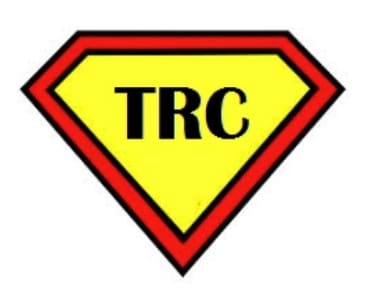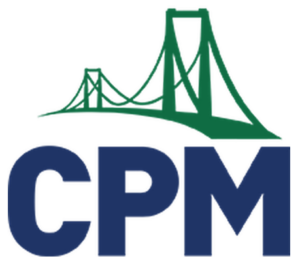Mark Coté, CPM Project Manager
Answering a call to seek out new ideas for improving mathematics education and test classroom innovations, 44 teacher-researchers helped launch CPM’s Teaching Redesign Corps 3.0 this summer. Two energized cohorts of exceptional teachers will begin 13 new classroom investigations during the forthcoming 2016-17 school year to complement the 18 studies conducted by the dedicated members of TRC 1.0 and 2.0, studies which resulted in numerous suggestions for improvements in our current curriculum and professional development.

This year, the TRC will be comprised of two subgroups – Exploration and Further Investigation. TRC 3.0 Exploration is a continuation of the successful discovery component implemented during the previous two years. The Exploration group is comprised of six teams of CPM teachers who met in Sacramento on June 30th and July 1st to design their own research projects and craft implementation plans. Each team will carry out a fairly structured action research study designed to improve instructional practices and enhance student learning. Monthly Skype meetings with the TRC Leadership Team will be held through the course of the investigations.
The Exploration teams and their respective proposal titles are: Group 1a: Beckie Frisbee, Shelly Grothaus, Beth Johnson – How do we shift the culture of the class using growth mindset and the idea that mistakes and developing understanding are valuable opportunities to learn, grow, and/or challenge one’s self? Group 2: April Bain, Stephanie McClain, Sandy Reavill – What are the benefits of adding regular opportunities for guided revisions of mathematical writing? Group 5a: Marty Joyce, Aristotle Ou, Erica Warren – Embedding Mixed-Spaced Practice as a Classroom Routine Group 5b: Taylor Clements, Samantha Falkner, Valerie Scott – What are some performance-based summative assessment methods that we can implement to better capture student learning? Group 7: Abbie Hobbick, Laura Ratliff – Can students learn to seek multiple strategies for problem-solving without a prompt? Group WC: Anthony Johnson, Jenni White – How can a written response be incorporated or utilized to maximize benefits for students on formative assessments?
These teams left nothing on the table as they departed Sacramento, enthused and ready to begin the research when school opens this fall. New teacher-researcher Abbie Hobbick summarized her thoughts. “This whole process is definitely a unique experience for me. I have never fully committed to completing a research study before, so I’m really excited to see how it goes and also to hear the findings from all the other studies. I am amazed at what we accomplished in 2 days. I never would have guessed that we would have a formal plan in place in such little amount of time. This is going to be an amazing learning opportunity for me, and I’m anxious to be able to share this experience with my other colleagues and district.” Returning TRC veteran Anthony Johnson added this comment on the improved format for proposal writing. “I loved the time that was given to share and react to initial proposals. It is very valuable to hear other people’s thoughts about our work. I also really liked the guided questions used to help brainstorm research ideas. In general, it seemed like our conversations were more directed, purposeful, and flowed much more naturally.” Finally, new researcher Aristotle Ou enjoyed the collegiality stating, “I liked being able to collaborate with like-minded individuals and explore new teaching practices to improve student learning.”
Complementing the TRC 3.0 Exploration group is the Further Investigation group, which will be solely concerned with validating two promising sets of results from the past two years. This group of 28 CPM teachers, divided into seven teams, met in Las Vegas on July 25th to learn about the two research projects and develop implementation plans to extend each study. The first study for further investigation, the TRC 2.0 Mistakes as a Focus for Learning effort, provided tantalizing data indicating that significant gains could be had by providing students with the opportunity to learn from both fabricated and organic mistakes. Study leaders Alycia Clarkson, Penny Smits, Tanya Lantrip, and Natalie Ijames developed numerous instructional and assessment strategies that helped students realize the power of mistake analysis, the learning potential of reflection, and the change in how they felt about themselves with regard to making mistakes in a mathematics classroom. By the end of the study, students learned to expect mistakes, both their own as well as others, to inspect them with care, and respect them as essential to the learning process.
The second study for further investigation, Developing a Culture of Investigation (work from both TRC 1.0 and 2.0), will be led by veteran researchers Pam Lindemer, Jen McCalla, and Christy McConnell. Positive initial findings resulted from the implementation of three instructional strategies and one study team management strategy. All strategies were coupled with an overall focus on growth mindset. Emphasis on both the building blocks of class culture and teacher talk had a significant impact on how students perceived the class and the content.
The Further Investigation Mistakes as a Focus for Learning teams include: Group A1: Alycia Clarkson (team leader), Laura Bell, Julie Kiedrowski, Megan McGregor Group A2: Penny Smits (team leader), Kerry Cardoza, Anthony Davis, Ilene Kanoff, Thor Tillberg Group A3: Tanya Lantrip (team leader), Heather Kosmowski, Claudine Margolis, Marc Petrie, Brooke Raven-Sandberg Group A4: Natalie Ijames (team leader), Chris Kintz, Sara O’Connell, Cathy Sinnen.
The Further Investigation Developing a Culture of Investigation teams include: Group B1: Pam Lindemer (team leader), Mark Jones, Angela Kraft, Chad Ophime Group B2: Jen McCalla (team leader), Laura Bain, Tammy Kaufman Group B3: Christy McConnell (team leader), Denise Dedini, Jesse Knetter.
With just one day to plan, all participants made excellent use of every minute. New TRC member Denise Dedini said, “It was incredibly powerful to hear about the implementation of best practices from the presenters and to begin wrapping my brain around my goals for this year. I’m excited to get started!” Intending to have an impact, new researcher Laura Bell added, “I am intrigued to take others’ ideas, tweak things in my classroom to make things work better, and see where I can go with this opportunity. As we share our findings with others, we’ll improve not only our own classrooms but others across the nation.”
The results of the Further Investigation project will be evaluated on the ease of implementing the approach, the effectiveness of the approach after implementation, and the likelihood of implementation. All researchers will be responsible for keeping track of the questions and concerns that surface as they implement the strategies. “We hope to find any common issues that should be addressed prior to endorsing the strategies and sharing them with the greater mathematics education community,” said Tom Sallee, originator of the TRC project
By continuing to trust in the intellectual effort and wisdom of teachers, we anticipate building on the success of the first two years. The two TRC 3.0 groups will support this next cycle of advancements, as we continue to realize our goal – help more students learn more math.

